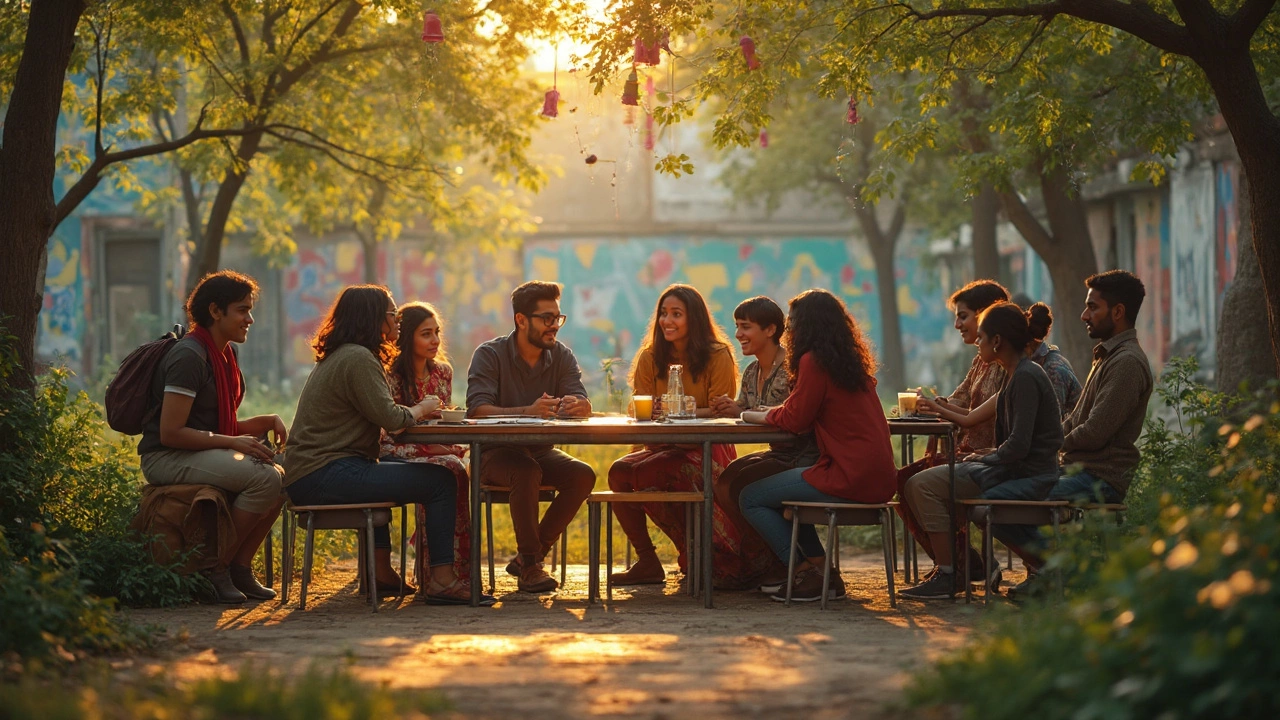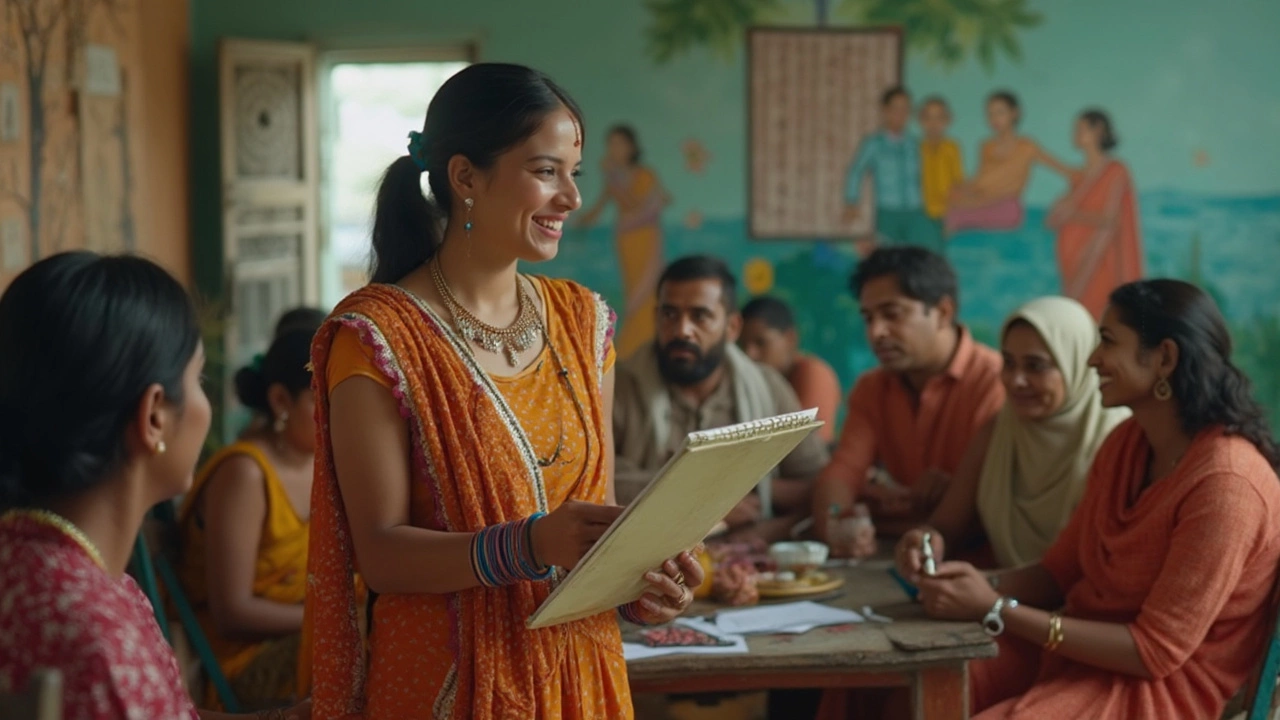How to Start an Outreach: Your First Steps to Real Community Impact
 May, 1 2025
May, 1 2025
Starting an outreach doesn’t need a big budget or a fancy marketing plan. The real magic is in understanding people—what they care about, what they need, and how best to reach them. Before you even send that first email or put up that first flyer, take two minutes and write down your main purpose. What do you actually want to change or support in your community? If you skip this step, you’ll get off track fast.
For example, when I wanted to get more parents involved in my local park clean-up, I didn’t blast a generic message everywhere. Instead, I thought about what would get my friends to actually show up with their kids (hello, free pizza and snacks). Outreach starts with simple, targeted action—make it clear, easy, and worth their time.
Pinpoint Your Purpose
Most community outreach projects fall flat because folks skip this step—they jump in with good energy but no clear direction. You need to know exactly what you want out of your outreach. Is it about cleaning a local park, getting more volunteers for the food bank, or maybe getting parents to a school event? If you can't say your purpose in one clear sentence, pick up a sticky note and jot it down until it feels right.
The experts at the National Council of Nonprofits say that projects with a focused goal are five times more likely to succeed than those with vague objectives. That’s huge. And it checks out—when your goal is clear, people understand quickly and are far more likely to take action.
Here’s a quick way to nail your purpose fast:
- Define your "what": What problem do you want to solve or change in your neighborhood?
- Decide your "who": Who do you want to help or involve (ex: parents, teens, local business owners)?
- Pick your "how": What basic steps could get you from start to results?
Want help getting started? Try the SMART goal trick. Make your purpose Specific, Measurable, Achievable, Relevant, and Time-bound. For example: “Get at least 20 neighbors to join Saturday’s street clean-up in May.” That’s way more concrete than just saying, “Let’s get more people involved.”
Look at this for perspective:
| Outreach Goal | Clarity |
|---|---|
| "Help our town" | Vague |
| "Raise $500 for new playground equipment by June 30" | Clear |
If you take time to be specific now, you save yourself a lot of confusion and wasted effort down the line. The sharper your purpose, the easier every next step will be—planning, inviting, and getting real momentum with your community outreach.
Know Your Community
You can’t lead a community outreach project if you don’t actually know what your community wants. A lot of projects flop not because the idea was bad, but because no one checked if it was relevant in the first place. Before you even think about events or sign-ups, spend some time learning about the people you hope to reach.
Here’s what works: get out and talk to people. Don’t just rely on online surveys (most folks ignore them). Show up where the action is—at schools, parks, coffee shops, or local markets. Be real and ask what issues bother them most. What would make their day-to-day life better? Even a few real conversations beat dozens of online responses. You don’t need a crowd to start; sometimes info from five neighbors is all it takes to spot a pattern.
Check out existing community groups or local social media pages. You’ll spot topics everyone is fired up about or complaints that keep popping up. When I started out, I learned more from eavesdropping at my daughter Orla’s school pickup than from any formal survey. People usually talk straight when they’re not under pressure.
- Look up census data or city reports to see who your community actually is—age breakdown, common jobs, and so on. For instance, about 60% of my neighborhood is families with kids under twelve. That’s game-changing for planning activities.
- Find out if there are language or accessibility barriers. If half of your area speaks Spanish, make sure you reach out in Spanish, too.
- Ask community centers or librarians for leads—they usually hear what people are asking for way before everyone else does.
Sometimes, seeing the numbers helps you spot gaps. Here’s a sample data table you might find useful for kicking things off:
| Group | Percent of Community | Top Concerns |
|---|---|---|
| Families (with kids) | 60% | Childcare, safe play areas |
| Seniors | 15% | Access to healthcare, transportation |
| Young Adults | 20% | Jobs, affordable housing |
The big secret? People love being heard, and your community outreach gets traction way faster when people actually see their needs driving every step.

Get the Word Out
Once you’ve settled on your purpose, it’s time to make sure people actually know about your community outreach. The big mistake? Thinking everyone will find out about your project just because you posted one thing online. Getting the word out means you’ve got to show up where people already are—both online and off.
Start with this: Are there school newsletters, neighborhood Facebook groups, church bulletins, or even local WhatsApp chats you can tap into? These small, community-driven channels almost always get better engagement than a generic public post, especially for local impact. For our park clean-up, a quick message to the PTA group chat got twice as many families involved as my posts on social media.
Here’s a cheat sheet for getting your outreach planning noticed:
- Keep messages short and specific. Tell people exactly what you need and when. “Bring gloves and we’ll provide snacks” beats “Come volunteer.”
- Ask a few friends or contacts to spread the word for you. Peer-to-peer sharing works. Even just three people texting five friends can snowball fast.
- Post on local forums and apps like Nextdoor—one 2023 survey found 42% of people discovered nearby events from these apps.
- Use visuals. A quick phone photo from last year’s event or a simple poster (Canva is your friend!) grabs more attention than text alone.
- If your group is up for it, go old-school: printed flyers at coffee shops, playgrounds, or the community library.
If you’re thinking about how many channels you actually need, here’s a quick look at what usually works best for community outreach:
| Channel | Response Rate (Typical) |
|---|---|
| Group chats / Text chains | 60% |
| Local social media | 35% |
| Printed flyers | 15% |
| Email newsletters | 20% |
The other trick is consistency. Don’t just tell people once—remind them a day before, and the morning of your event or campaign. Folks get busy and forget, but a friendly ping keeps your cause on their radar. And if your outreach is ongoing, always share photos and stories of what’s happening. People want to see that their efforts matter.
Build Real Connections
You can send out dozens of emails or hand out flyers at every corner, but if people don’t trust you—or don’t feel a personal reason to care—your community outreach won’t go anywhere. What actually sticks is a real, honest connection between you and the folks you want to reach. That means listening as much as talking, showing up to events, and learning what matters to them, not just what’s on your mind.
Here’s the thing: research from the Stanford Social Innovation Review shows that face-to-face outreach is still the most effective way to build trust, even in the era of digital everything. If possible, meet people at their favorite local spots—schools, playgrounds, or coffee shops. You don’t need a huge crowd to start. A strong relationship with five people beats a weak one with fifty.
- If you’re new to outreach, start by volunteering alongside the group you’re hoping to reach. Get your hands dirty—sometimes literally. People notice when you actually show up, not just talk about it.
- Offer something useful. Is your group mostly parents? Set up a play area for kids while you chat with grownups. Talking to young folks? Bring snacks or something fun to do. A little goes a long way.
- Always ask for feedback. What worked? What didn’t? It shows you’re not just running things your way, but genuinely want their input.
One small but powerful trick: keep a list of people you meet and details about what matters to them. Follow up—personally, not just with mass emails. That might sound old school, but a quick text or call makes a world of difference.
Here’s a snapshot of what makes community outreach teams successful, based on actual surveys from the Pew Research Center:
| Method | Reported Success Rate |
|---|---|
| Face-to-Face Meetings | 78% |
| Personalized Emails | 54% |
| Social Media Posts | 31% |
Community engagement isn’t about having the loudest voice, but about having open ears and being there. You can’t fake real connection—people pick up on effort, and it keeps them coming back again and again.